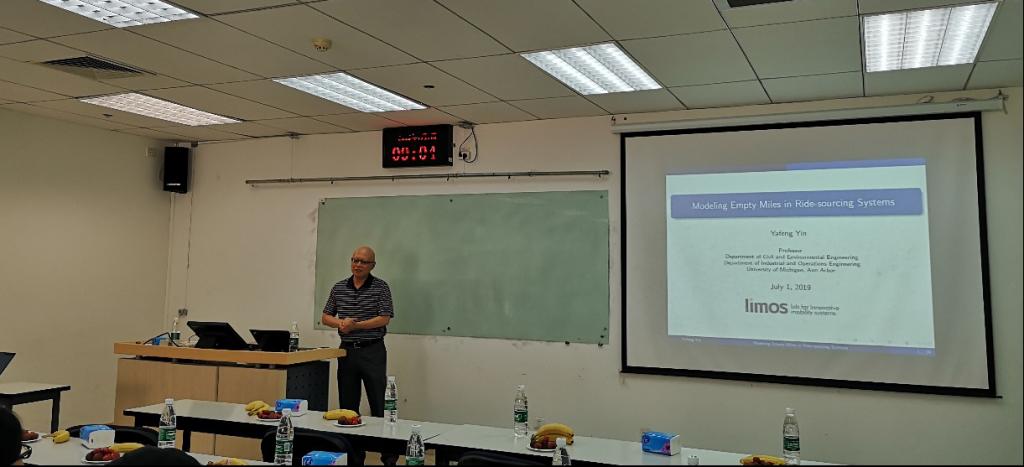Prof. Yafeng Yin from University of Michigan Visited BUAA SEM and Gave a Seminar, “Modeling Empty Miles in Ride-sourcing Systems”, on July, 2019. Prof. Qiong Tian chaired this seminar. Other participants were Prof.Renyong Guo, Prof.Tianliang Liu, Dr.Chenlan Wang, Dr.Chunan Wang and over 40 teachers and students from other universities.

Ride-sourcing services like Uber, Lyft and Didi Chuxing are playing an increasingly important role in meeting mobility needs in many metropolitan areas. Other than delivering passengers from their origins to destinations, ride-sourcing vehicles generate massive vacant or empty trips from the end of one customer trip to the start of the next. These vacant trips contribute additional traffic demand and may worsen the traffic conditions in urban networks. Capturing the congestion effects of these vacant trips poses a great challenge to the modeling practice of transportation planning agencies. With ride-sourcing services, vehicular trips are the outcome of the interactions between service providers and passengers, a missing ingredient in the current traffic assignment methodology. In this paper, they enhance the methodology by explicitly modeling those vacant trips, which include cruising for searching for customers and deadheading for picking up them. Due to the similarity between taxi and ride-sourcing services, they firstly extend previous taxi network models to construct a base model, which assumes intra-zone matching between customers and idle ride-sourcing vehicles and thus only considers cruising vacant trips. Considering spatial matching among multiple zones commonly practiced by ride-sourcing platforms, they further enhance the base model by encapsulating inter-zone matching and considering both the cruising and deadheading vacant trips. The extended model describes the equilibrium state that results from the interactions between background regular traffic, and occupied, idle and deadheading ride-sourcing vehicles. A solution algorithm is proposed to solve the enhanced model effectively. Numerical examples are presented to demonstrate the model and solution algorithm. Although this study focuses on ride-sourcing services, the proposed modeling framework can be adapted to model other types of shared-use mobility services.
After Prof. Yin's talk, he answered teachers'and students'questions. This seminar is fruitful, and will be helpful for our modeling of transportation problem in the future.